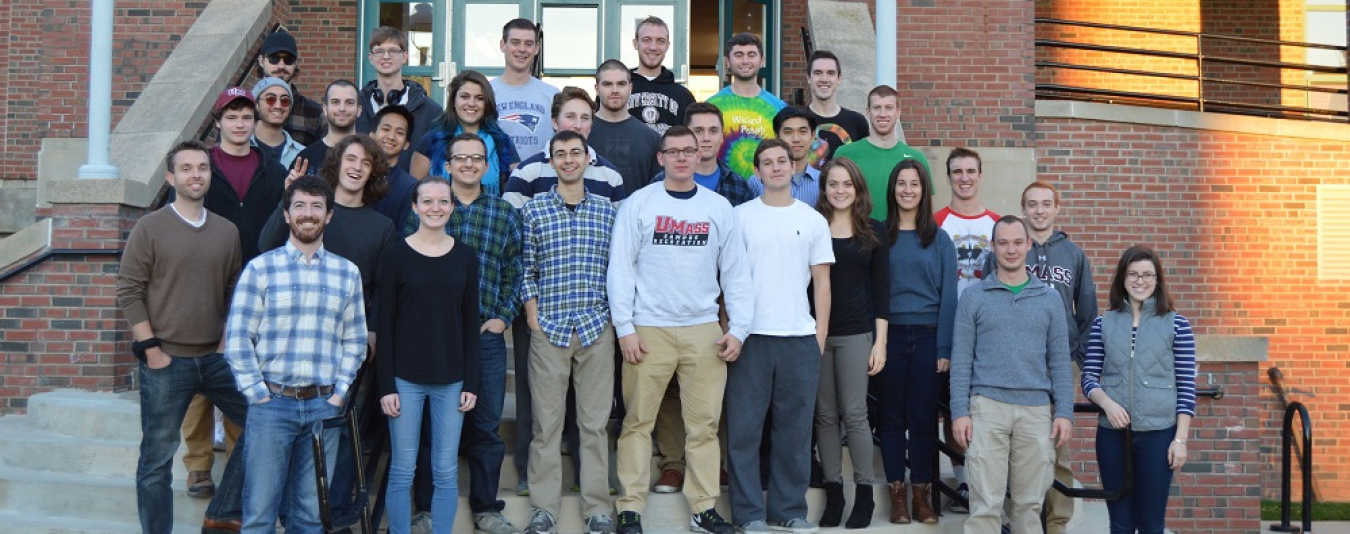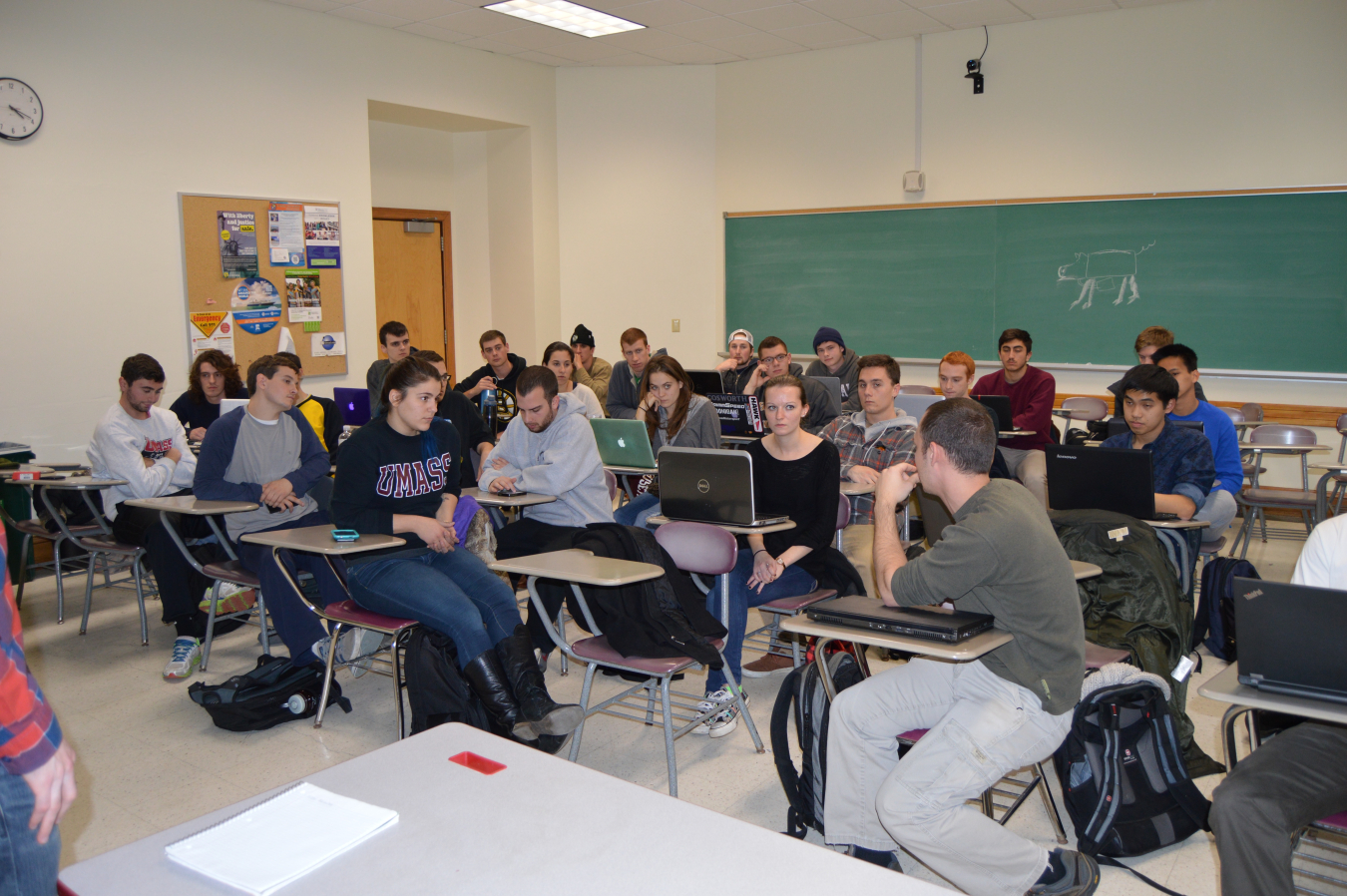
Team roster: Evan Benoit, Mechanical Engineering; Robert Bonetti, Management; Kristina Bosnic, Mechanical Engineering; Justin Calderara, Mechanical Engineering; Murphy Davidson, Mechanical Engineering; Marina Di Cocco, Industrial Engineering; Stephen Draghi, Accounting; Eric Dupuis, Mechanical Engineering; Gregory Forbes, Mechanical Engineering; Pavel Grigorash, Mechanical Engineering; Stephen Hicks, Mechanical Engineering; John Hoar, Mechanical Engineering; Amy King, Mechanical Engineering; Maxwell Kinney, Mechanical Engineering; Matthew Langdon, Mechanical Engineering; Christine Lebruto, Finance; Christian Lewis, Management; Alexander Losh, Mechanical Engineering; Anthony Masi, Mechanical Engineering; Matthew Minafo, Accounting; Jessica Murphy, Finance and Legal Studies; Tyler Nardone, Mechanical Engineering; Michael Ng, Mechanical Engineering; Duy Nguyen, Mechanical Engineering; Quentin Pagnier, Mechanical Engineering; Brendan Ryan, Operations/Information Management; Ethan Stokes, Electrical Engineering; David Varney, Mechanical Engineering; Ryan Wilson, Finance

The MinuteWind Team has a discussion in class.
TEAM NAME:
WHY WIND?
With a wind energy program founded in 1973, the University of Massachusetts Amherst has a long history of wind energy research and education activities. This team of undergraduate engineering and business students has elected to be part of this year-long course to become experts in creating and marketing their project. The more they talk with experts and potential end users, the more confident they are in their project and its application. The team believes this product can change the logistics of water treatment and transportation, benefiting all of the end users.
PROJECT DESCRIPTION:
UMass MinuteWind aims to build a wind turbine that powers a water purification system that is to be utilized after natural disasters, at forward operating bases, and in refugee camps. Depending on the operating conditions (i.e. population size, geographic location, etc.), multiple turbines could be implemented to suit a variety of scenarios. They plan to market this turbine primarily to non-governmental organizations and disaster relief groups, with the goal of supplying clean drinking and grey water to affected locations.
GAME PLAN:
The team's strategy since the beginning of the project has been to approach the chosen problem from a global perspective and slowly transition to a more refined scope for individual sub-groups to focus on. With a team of about thirty students, UMass MinuteWind is fortunate to have enough resources to spread the expertise and knowledge widely across the project. They have also designated particular students as team leaders, who are responsible for organizing any deliverables for their sub-group assignment. In terms of building the test turbine, they plan to allow each sub-group to work on their components while coordinating closely with other teams in order to ensure that everyone is satisfied with the final product. The marketing team will be working on the business plan in parallel to the engineering team fabricating and testing the wind turbine in the wind tunnel.
TEAM STRENGTHS:
One of the greatest strengths of the UMass Amherst team is the variety of majors present in the class. While many of the students are from a mechanical or industrial engineering background, the team also consists of several students from electrical and computer systems engineering, finance, marketing, operations and information management, and accounting. This has allowed them to consider problems from a broad, multifaceted perspective early in the project and seamlessly transition to a more specific and focused approach for the later portions. Another strength of the team is that the classroom environment is primarily student-driven. Leaders throughout the team are responsible for organizing assignments for their respective groups, and all deadlines and goals are decided upon fairly democratically. Lastly, the size of the team has allowed them to allocate expertise in all of the significant areas of focus including market analysis, research, mechanical subsystems, rotor dynamics, and electrical/controls.
TEAM HURDLES:
Business Plan
The largest challenge the business team faces is the need for quality interviews with potential customers. Despite already conducting dozens of interviews with experts from the three target markets, much more information and data are necessary to develop a product. Finding the proper sources and compiling the information in the most effective manner will be an integral component of the business plan due in April.
Technical Design
The greatest challenge with the technical design of the turbine will be the electronics and controls. Since the last deliverable deadline, the class has recruited the talents of another electrical engineering student, which will help significantly with the circuitry. Designing the circuits and controller will require consultation with experts in the field. Bill Stein, an engineer for Black Island Wind Turbine in Hadley, Massachusetts, has been a fruitful resource for the electrical team thus far in answering questions about the design. Ultimately, the whole team will need to support the electrical group throughout the semester to meet our goals.
Deployment Strategy
The challenge involved with deployment is still the size of the turbine and the desalination/purification unit. Finding a shipping unit that can house both vessels will be challenging. Also, determining a method to distribute the product effectively overseas will present a challenge.
Turbine Performance Testing
The greatest challenge involved with turbine testing this semester will be acknowledging the slight differences in the test and market products and executing them effectively on the test turbine scale. Coordinating with all subgroups throughout the class to ensure that the scaled turbine will operate as anticipated will involve a strong effort from the class leadership.
Bonus Challenge
The bonus challenge involves a unique demonstration of the load that the turbine will power. This will involve an exhibition of a pump and filtration system to remove particulate matter from water. The team’s current plan is to visually demonstrate polluted water being filtered through a series of filters to simulate how the desalination/purification unit will operate. Executing this in a way that is captivating and informative for the audience will require a strong, combined effort.
TEAM TAKEAWAY:
Beyond a win, the team is looking to become more knowledgeable in fields they have never experienced. As the world becomes more globalized, the team feels it is important to learn research skills and have a working knowledge of renewable energy. Additionally, as they are approaching this as a start-up venture, team members are learning entrepreneurship skills that are transferable across all disciplines.

